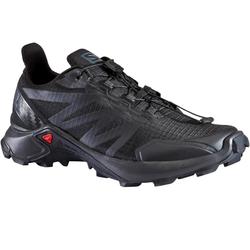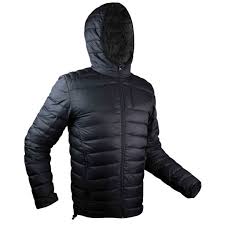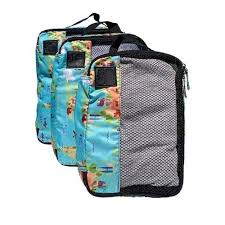Packing for the Independent Traveller
- Annie Mason
- Jan 1
- 7 min read
Updated: Jan 19
What do you really need to take with you?
The answer is simple- way less than you think!
But clearly what you pack, depends VERY much on the sort of trip you are planning, so there isn't one answer. We do however have a basic travelling kit, which has all the essentials that we take on a trip where we have no idea where we will end up. It works for a week or 6 months. If we are treking, have our own car, cruising or doing something special then there are different needs, so we add extras. At the end of this post is our packing checklist. But let's start at the beginning......

Basic Travelling: Light (7-10 Kg each) in medium back pack each (50-70l) or a cabin baggage size wheelie bag.
Perfect for trips to one climate zone, single style, under a few months. 10 -12 kgs is all you want to carry and you shouldn’t have boots and day packs hanging off the outside as extras. If you have more than 12kg, you may need to throw some stuff out!

Extended Travelling: Medium (10-15kg each)
If we are going to multiple climates (summer and winter), multiple styles (working, cruising, trekking), long term (living out of your bags) it is VERY hard to stick to 10kg each- so we have 2 choices:
· To get an additional small (check in size) wheelie bag or back pack each. So, you wheel a bag and have on on your back. We often try and find a base to leave the bag with the “out of season” gear and we loop back to collect it later. If you can’t loop back and take it with you- its not such an effort and doesn’t even get unpacked.
· To leave the backpack and get a bigger roller bag. Roller bags are softer than a suitcase, have tough zips and are usually water proof- so we like them better than a suitcase (you do have to watch weight). If you are in one place for a while, have a car and don’t mind taxis, a roller bag, holds more and will probably work. But anything which involves, stairs, dirt roads or sand……..ahhh.
Travelling with a car (as much as you like!)
Perfect for the long trips where you live out of your car. This is heaven. You can divide your gear into storage tubs. Look for cheap things as mostly you will give these away at the end of the trip.
Trekking, backpacking and camping (specific gear).
This are wilderness trips where you camp out (sometimes for long periods) and walks lots!. We don’t do so much of this these days. They are not day hikes- which Gary in particular does often. When we do we try to hire or buy the gear we need there and don’t seem to have a problem doing that.
Some General Packing tips:
Don’t stress about checking your bag in: We fly lots and it is still rare to have a bag lost. Take your valuables with you and relax.
If you can’t afford to lose it- don’t take it!- Leave valuables at home. It costs more in insurance if you take them with you.
Travel Light. You will always end up with things you don’t use- so get rid of them and only travel with the stuff you love. If you buy something new- throw something out.
Use colour coded packing cells : You can buy these in lots of places and lots of sizes. We have these in a few sizes and everything goes in a stuff cell. They make packing easy and organisation even easier. We have some for clothes and some for bits.
Don’t buy too much in advance: Buy the important things at home (the jacket, bag and boots) as quality camping shops are hard to find in some parts of the world. Take the other bits from what you have at home and replace them locally as you need to. Cold weather gear is best bought in cold place. Take only enough (tissues, hand cream etc)- you can buy more along the way.
Take Multi-Purpose Gear. My sarong is the best example of multi-purpose gear. It is a shawl, head cover, scarf, towel, blanket, sheet, skirt, cover for the beach, table cloth and even a bag. We like pants that zip off into shorts, walking shoes you can wear out, and swimmers that you can wear as a pair of shorts or underwear/ to the gym.
Watch for sharps and liquids: If you are taking only hand luggage all liquids must be no more than 100ml each and need to be in a plastic zip lock bag in the top of you pack to take out at check in and customs and you can’t take scissors (I manage round ended ones sometimes) or a pen knife.
Choose your back pack carefully: Never, ever, ever even consider taking those massive backpacks you see in camping shops. We have had 4 back packs in 35 years. None have died, we just replaced them with a newer, more fancy and usually lighter version. Here are some of the criteria and considerations we have when choosing a backpack:
· 55L (10 kg) is great for most women and 65L (12kg) for men
· Forget about the back packs with wheels as well- the extra weight and the bad frames mean- that they don’t work well as either a back pack or a bag.
· Don’t pay a fortune- Decathalon has a great selection around $100. We have the Quechua bags (Travel 500 /50L for me and 70l for Gary).
· Have a few compartments for organisation
· Rain cover isnt essential unless you are hiking.
· Light- 20g per litre is REALLY nice
· Have a frame for that allows them to sit upright when you put them down loaded or unloaded. Make sure they don’t fall forward all the time.
· A side or top handle- ideally both
· Rigid and adjustable frame and straps so that the weight sits on your hips not the shoulders- this is where a women’s pack is designed differently
· Not so tall that it sticks above your head- short people need short back packs
· Wide well-padded straps
· An attachable day pack- not required but handy
· A cover- They weigh 400g- so You will have to decide if the security they offer, and how they keep your bag clean is worth it.
· Take a small day pack 30l for day trips.
SOME SPECIFICS
Clothes:Quality hiking pants: Jeans are great but so hard to dry and heavy to carry.
A quality light weight down jacket: We stuff ours into a cover the doubles as a neck rest
A waterproof , light weight wind resistant jacket to go over the top of your coat
One good set of clothes
Remember fabric with dark colours or patterns, which dries easily and doesn’t need ironing is perfect. You will often by washing by hand so clothes have to hide the stains and inground dirt and dry quickly (or they smell). Zip pockets in shorts, coats and trousers are a plus.
Electronics: These will be a BIG part of your weight. Travelling with a partner means you can share some, so a trip on your own means they are a big chunk of your weight. We travel with a laptop and I ipad, 2 Iphones, 1 international adaptor (we find the country plugs lighter and smaller, so often travel with 2 of these instead. Make sure they have 3-4 USB ports built in), a power pack and a SSD Hard drive- with movies, music and back up. I have a phone lanyard.
First Aid: Not too much but as much as you need until you get to a chemist or doctor. You do need scripts for any prescription medications and plenty of spares. Remember spare reading and sun glasses.
Stationary: A few pens, a few bulldog clips, a highlighter and a permanent marker all come in handy. Even though my journal is now on line- we still have a small diary type note book each.
Repairs: A need and thread, some string, a shoe lace, a super glue and a piece of wire.
Food : We have always had a food bag with zip lock bags, a few utensils, some snacks, tissues, wet ones and an insulated open neck water bottle.
Washing We have an elastic clothes line, a scrubbing brush and a few washing sheets (these dissolve in water and can be put in a washing machine).
Toiletries: Carry these in a bag with a hook to hang on the door in bathrooms. Transfer all liquids into small refillable bottles, get the ‘Compressed’ version of sprays and share whatever products you can. We take a microfibre towel to share. Dont forget insect repellant and sunscreen.
Shoes: Shoes can make up half your weight. Good light boots can replace trainers, keep your feet warm and dry in the snow and rain and protected in long walks and treks. We like Gortex trail runner boots- lighter- more like trainers.
PACKING LIST
Below is a list of the items we share and those we take individually when we leave on a trip where we have both summer and winter destinations.
I hope this helps you! Remember the golden rule- travel light. I have a set number of packing cubes and when they are full- I'm done!
Bits | Technology | Toiletries | Documents/ IT | Clothes Women | Clothes Men |
Sunglasses x2 /case+ string | SSD hard drive | scrubbing brush | 2 Credit cards | boots | boots |
glassesx2 /case | Power pack | shampoo | I Debit card | sketchers | sketchers |
umbrella | laptop | conditioner | copies of passports | Thongs | Thongs |
clothes line | I pad | deodorant | passports | Sandles | Boat shoes |
washing sheet | Multi leads | razors | spare photos | sox x3 | sox x3 |
superglue | 2 phones | soap | copy of card details | undiesx5 /bras x2 | undiesx5 |
wire | International adaptor | toothpaste | $100 /currency | down jacket in neck pillow | down jacket in neck pillow |
elastic hair band | headphones | toothbrush | International licence | T- shirts x2 | T- shirts x5 |
safety pins | Selfe stick | dental floss | Travel Insurance | fleece x2 | fleece x2 |
small microfiber towel | Phone lanyard | nail clippers and file | Card guard | trousers x 2 | trousers x 3 |
sewing kit | Body moisturiser | Business card with QR code | Light rain jacket | Light rain jacket | |
zip bags | Face moisturiser | pens | swimmers | swimmers | |
Open neck insulated water bottle | post it pads | neck warmer/scarf | neck warmer/scarf | ||
Small drawstring bags x 4 | note pad | gloves | gloves | ||
wet ones | highlighter | thermal | thermal | ||
coin purse/ hook |
|
| perm marker | jumperx2 | jumperx2 |
sarong |
|
| business cards | Shorts/ dress x4 | shorts x4 |
Bag Cover |
|
| bulldog clips | Good shirt | good shirt |
reusable shopping bag |
|
| glue stick |
|
|
|
|
| scissors |
|
|
|
|
| paperclips |
|
|
|
|
| Diary with elastic |
|
|
|
|
|
|
|
|
Good luck!
“Take only what you can carry and let your memory be your travel bag”. Solzhenitsyn



Comments